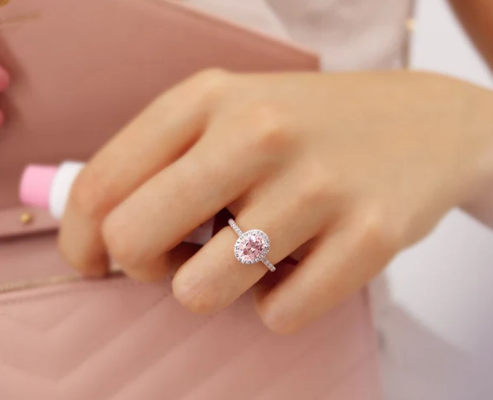As the new decade unfolds, the world of fashion is undergoing a transformative evolution, blending technological advancements with timeless aesthetic sensibilities. The 2020s promise to be an era of innovation and sustainability, where the industry’s traditional boundaries are challenged, and new trends emerge that redefine the way we perceive and consume fashion.
- Sustainability Takes Center Stage
One of the most significant shifts in the fashion industry in recent years has been the increasing focus on sustainability. As consumers become more environmentally conscious, brands are responding by adopting sustainable practices throughout their supply chains. From sourcing eco-friendly materials to implementing ethical manufacturing processes, sustainability is no longer a trend but a fundamental ethos shaping the future of fashion.
Designers are exploring innovative materials such as recycled fabrics, organic cotton, and even lab-grown textiles to reduce environmental impact. The concept of circular fashion, where garments are designed for longevity and recyclability, is gaining momentum. Upcycling and repurposing vintage clothing are also becoming mainstream, reflecting a growing desire for conscious consumption.
Consumers are demanding transparency from brands, pushing them to disclose their environmental and social practices. As sustainability continues to drive consumer preferences, we can expect to see more collaborations between fashion houses and environmental initiatives, fostering a more sustainable and responsible industry.
- Tech-Infused Fashion
The intersection of fashion and technology is reshaping the way garments are designed, produced, and experienced. In the 2020s, technology is not merely a tool but an integral part of the creative process, offering endless possibilities for innovation.
Advancements in 3D printing are revolutionizing garment manufacturing, allowing designers to create intricate and customizable pieces with minimal waste. Virtual and augmented reality are transforming the retail experience, enabling customers to try on clothes virtually or immerse themselves in interactive fashion shows from anywhere in the world.
Smart textiles embedded with sensors are another frontier in tech-infused fashion. These textiles can monitor biometric data, adjust temperature according to weather conditions, or even change color based on mood or surroundings. Wearable technology, such as smartwatches and fitness trackers, is seamlessly integrating into everyday apparel, blurring the lines between fashion and functionality.
The rise of artificial intelligence is also influencing fashion design, predicting trends based on vast datasets and optimizing supply chain logistics. As technology continues to evolve, fashion in the 2020s will undoubtedly embrace innovation, creating a synergy between craftsmanship and cutting-edge technology.
- Cultural Diversity and Inclusivity
In the era of globalization, diversity and inclusivity have become non-negotiable values in the fashion industry. Designers are increasingly celebrating cultural heritage and embracing diverse perspectives, resulting in collections that reflect a rich tapestry of global influences.
Fashion brands are amplifying underrepresented voices and championing inclusivity on the runway and in advertising campaigns. Models of various ethnicities, sizes, ages, and abilities are gaining visibility, challenging traditional beauty standards and promoting a more authentic representation of society.
Moreover, cultural appropriation is being addressed more critically, prompting brands to engage in meaningful dialogue with communities from which they draw inspiration. Collaborations with indigenous artisans and local craftsmen are becoming commonplace, fostering cultural exchange and promoting sustainable livelihoods.
The demand for inclusive fashion extends beyond representation to accessibility. Adaptive clothing designed for individuals with disabilities is gaining traction, offering stylish and functional solutions that cater to diverse needs. As inclusivity continues to shape the fashion narrative, the industry is evolving into a more inclusive and culturally aware space.
- The Rise of Genderless Fashion
In the 2020s, traditional notions of gender in fashion are being challenged as designers embrace genderless or gender-fluid aesthetics. Clothing is increasingly viewed as a form of self-expression rather than conforming to binary constructs, leading to more inclusive and fluid designs.
Gender-neutral collections are blurring the lines between menswear and womenswear, offering versatile pieces that can be styled and worn by individuals of any gender identity. Fashion houses are rethinking sizing charts and garment labels to accommodate a spectrum of body types and preferences, promoting a more inclusive shopping experience.
Celebrities and influencers are also playing a pivotal role in dismantling gender norms, showcasing genderless fashion on red carpets and social media platforms. This cultural shift towards inclusivity is not only redefining fashion but also challenging societal perceptions of identity and self-expression.
- The Influence of Social Media and Digital Platforms
Social media platforms have democratized fashion, giving rise to a new era of digital influencers and online fashion communities. Instagram, TikTok, and Pinterest have become virtual runways where trends are born, debated, and disseminated at lightning speed.
Fashion brands are leveraging social media to engage directly with consumers, bypassing traditional gatekeepers and fostering a more interactive relationship. Influencers with niche followings are collaborating with brands to co-create collections and influence purchasing decisions, blurring the lines between creator and consumer.
The digital landscape has also fueled the popularity of direct-to-consumer brands, offering affordable and trend-forward clothing through online platforms. Virtual fashion shows and digital presentations have become the norm, allowing designers to reach global audiences and democratize access to high fashion.
As social media continues to shape consumer behavior and trends, the fashion industry in the 2020s will prioritize digital innovation, embracing the power of online communities to drive creativity and commerce.
Conclusion
The 2020s are poised to be a decade of profound transformation and innovation in the fashion industry. From sustainability and tech-infused designs to cultural diversity and inclusivity, the trends shaping the future of fashion reflect a shift towards more conscious and inclusive practices.
As consumers demand transparency, authenticity, and sustainability, fashion brands are reimagining their approach to design and production. Technology is driving unprecedented creativity, offering new ways to create, experience, and consume fashion.
Moreover, the embrace of diversity and inclusivity is reshaping societal norms, promoting a more inclusive and representative fashion landscape. As we navigate this new era of fashion, one thing is certain: the 2020s will be defined by creativity, innovation, and a commitment to shaping a more sustainable and inclusive future for the industry.





